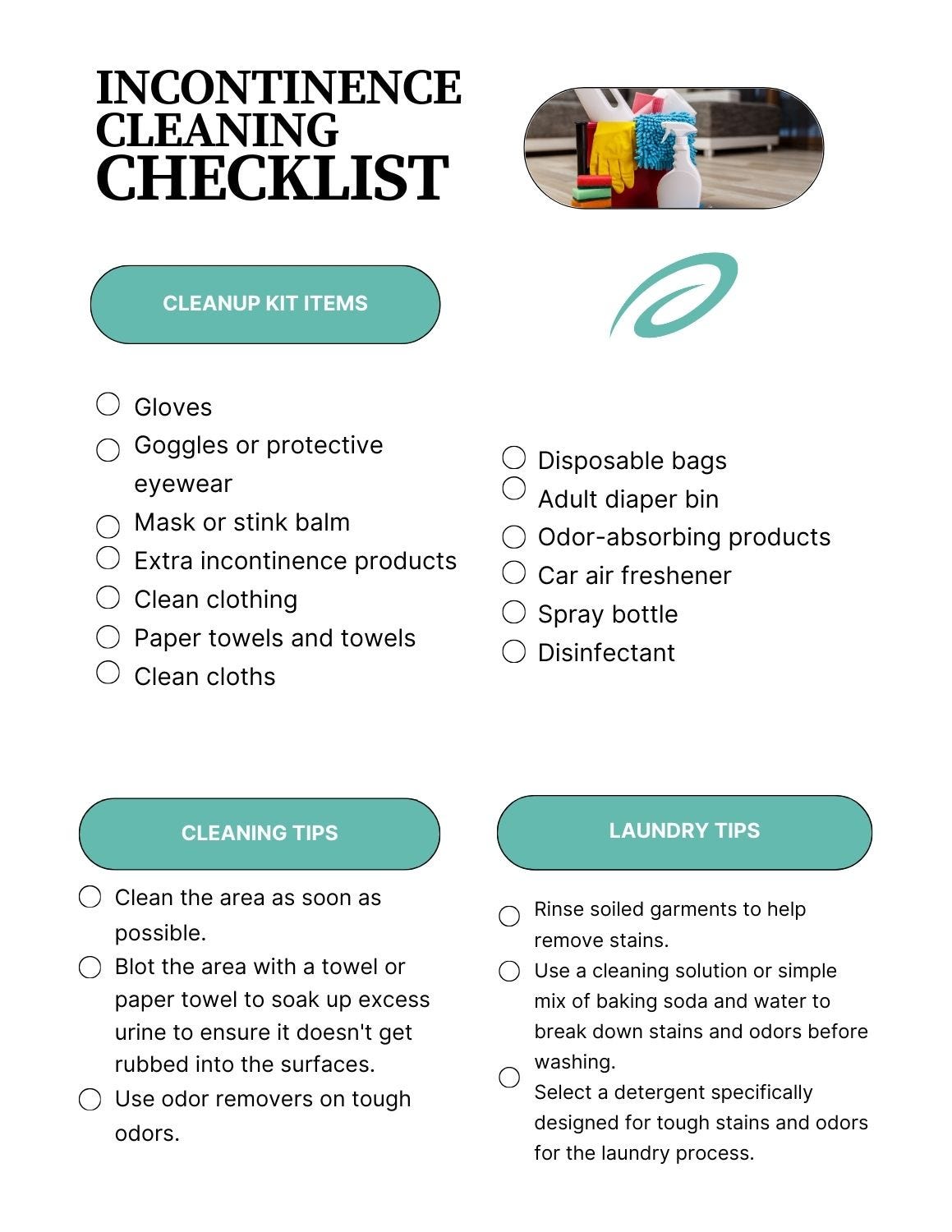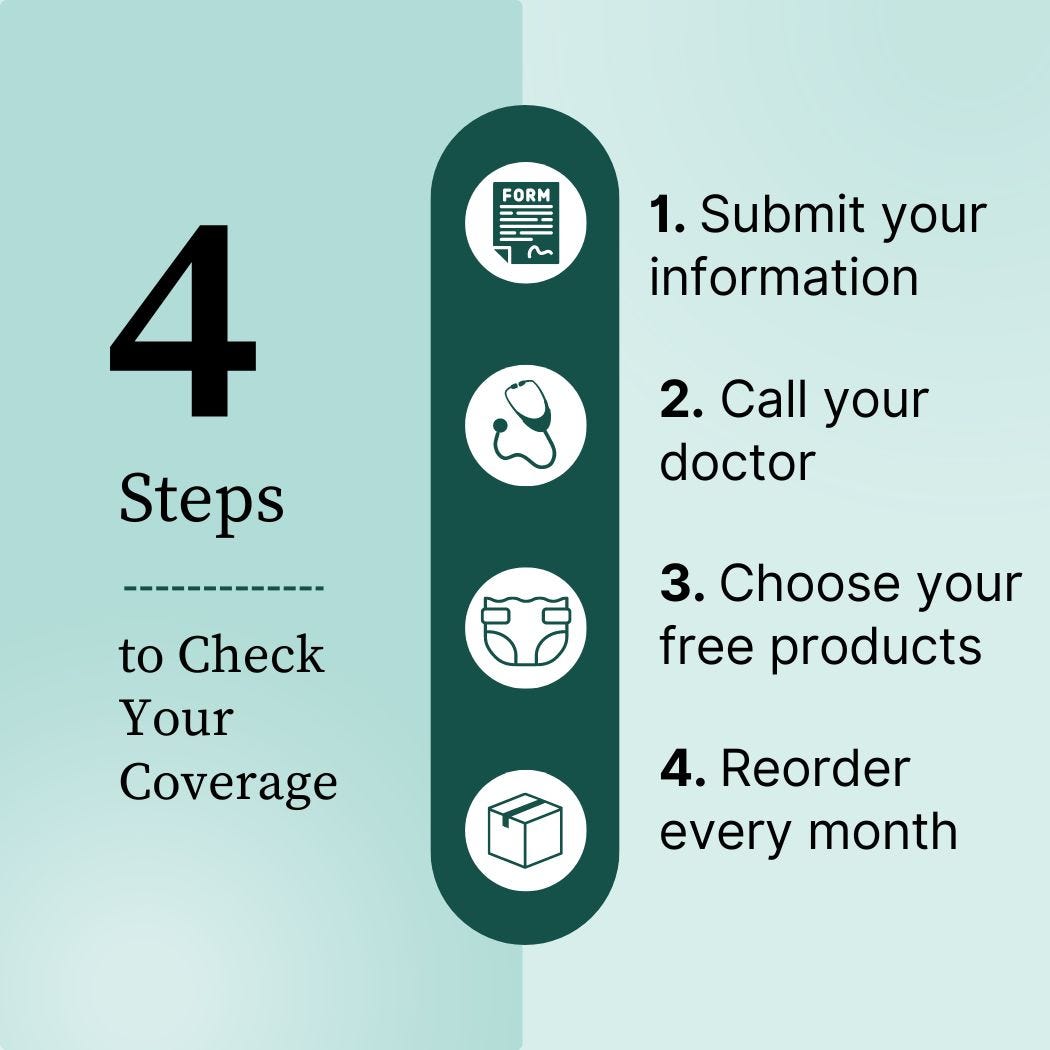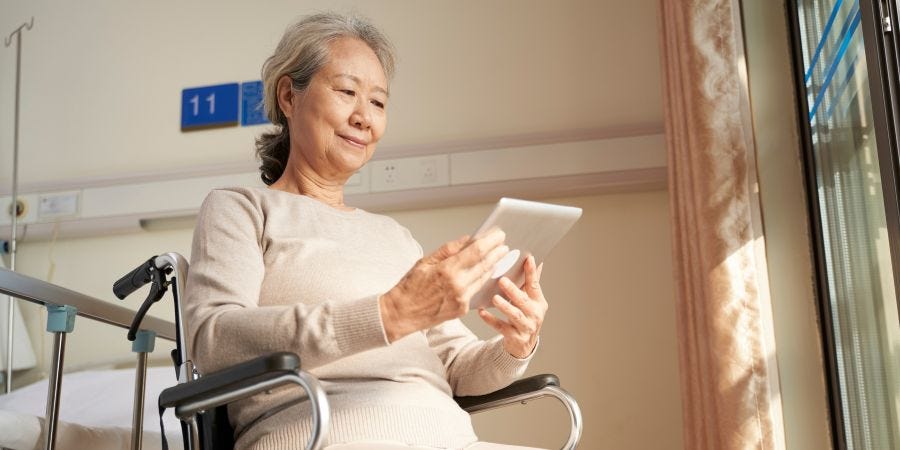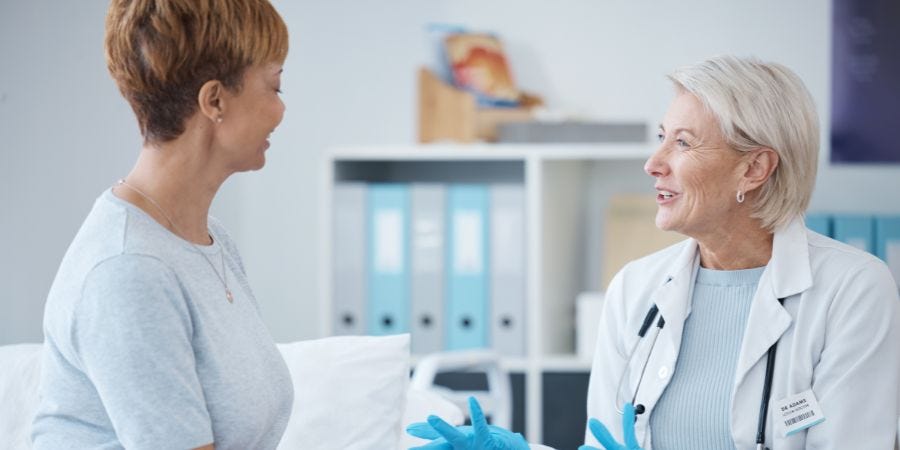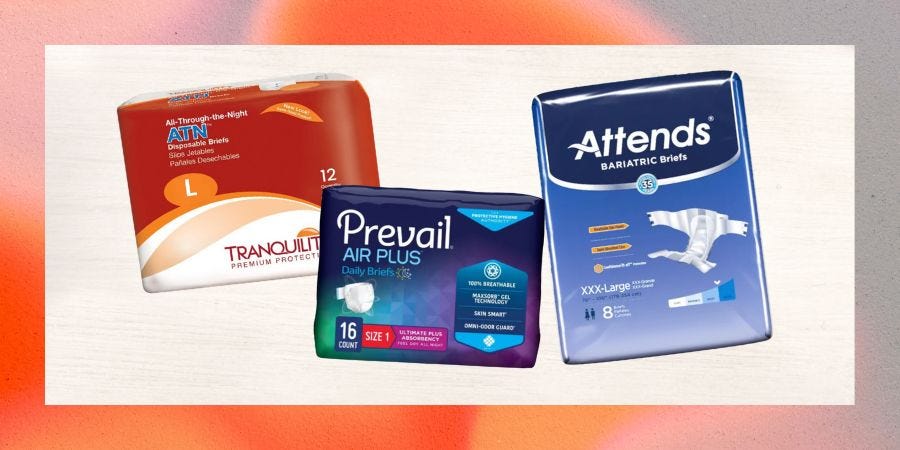Key Takeaways:
- Preventing incontinence accidents is the first step in managing leaks outside the bathroom.
- Simple solutions can help clean incontinence stains and odors from couches, cars, and beds.
The challenge of incontinence can extend beyond the confines of the bathroom, impacting various aspects of daily living for both the individual living with incontinence and their caregiver involved.
As an Occupational Therapist specializing in dementia care, I recognize the intricacies and sensitivities involved in managing incontinence compassionately and effectively.
Throughout this post, we'll explore practical strategies for maintaining a clean, comfortable, and dignified environment, even in the face of these unforeseen challenges, to help everyone involved in care.

JUMP TO:
Incontinence Outside the Bathroom
Preventing Accidents on Couches
How to Make a Portable Cleanup Kit
How to Clean Incontinence Accidents from Surfaces
Eco-Friendly Options for Cleaning Incontinence
How to Get Free Incontinence Products for Your Loved One
INCONTINENCE PRODUCTS THROUGH INSURANCE:
Aeroflow Urology is in-network with many Medicaid and Medicaid-managed insurance plans and is accredited by Medicaid. Complete our Eligibility Form, and we’ll automatically check to see if your plan covers incontinence supplies. ***Must meet certain requirements to qualify.***
You will also receive the care and attention every person managing incontinence deserves: A personalized list of 100% insurance-covered incontinence supplies, a dedicated Continence Care Specialist you can contact during business hours, a user-friendly online portal for easy monthly reordering, and educational content.
Get the continence care you need with the dignity you deserve. Join the Aeroflow Urology family today! It only takes 5 minutes to get started.
Incontinence Outside the Bathroom
Based on my experience, here are some of the most frequent areas affected:
- In the bedroom. Often, incontinence can occur while the person is lying in bed. This can be particularly challenging due to the absorbent nature of bedding and the potential for discomfort during sleep.
- On surfaces like chairs or couches. Sitting areas are common spots for accidents since they are used frequently throughout the day.
- In the car. Traveling can be unpredictable, and incontinence incidents can occur during car rides, posing unique challenges in a confined space.
Adapting your cleaning strategy to the specific location and surface type is important. For instance, enzymatic cleaners might be excellent for upholstery but unsuitable for car interiors. It's important to remember that adapting your approach isn't just about cleaning effectively; it's also about reducing stress for you and your loved one. A well-thought-out plan can make these incidents less disruptive to your daily routine and help maintain a calm, nurturing environment at home.
Let's break down the different areas outside of the bathroom where incontinence occurs and discuss how to prevent accidents in each.
Preventing Accidents in Bed
One common area where your loved one may experience incontinence episodes (whether it's human feces or urine) is in bed at night. In these situations, it's essential to take preventative measures to help decrease incontinence episodes in the bed.
Some preventative ways we can do this include:
- Ensure your loved one has the proper incontinence products for their level of leakage (adult briefs, pull-ons, or bladder control pads).
- Help them to the bathroom right before bed.
- Implement a regular toileting schedule where you take them to the bathroom every few hours and help them change their incontinence products.
It's also important to look at proactive ways we can help when these episodes of bowel and bladder incontinence occur by addressing the following:
- Products to protect the bedding, such as peelaways, which are disposable fitted sheets, and incontinence pads on top of the fitted sheet.
- Select clothing that can be easily changed and cleaned (elastic pants). Avoid clothes with complicated fasteners.
Preventing Accidents on Couches
Next, let's discuss when incontinence affects surfaces like couches or chairs. As always, we will want to ensure preventative and proactive measures are in place.
Here are some preventive measures to consider:
- Ensure your loved one has the proper incontinence products (adult briefs, pull-ons, or bladder control pads).
- Implement a regular toileting schedule where you take them to the bathroom every few hours and help them change their incontinence products.
Here are some proactive ways to help when incontinence affects surfaces like chairs and couches:
- Furniture covers, such as waterproof couch covers.
- Washable chair pads.
- Select clothing for the person with incontinence to wear that can be easily changed and cleaned. Avoid clothes with complicated fasteners.
Preventing Accidents in Cars
Traveling with a loved one living with incontinence presents its own set of challenges. It's essential to be prepared for the possibility of incontinence episodes in the car, as they can be particularly challenging due to the confined space and the need to maintain a clean and comfortable environment on the go.
Here are some preventative measures to consider:
- Ensure your loved one has the proper incontinence products for their level of incontinence (adult briefs, pull-ons, or bladder control pads).
- Implement a regular toileting schedule where you take them to the bathroom before and after travel and help them change their incontinence products.
- Select clothing for the person with incontinence to wear that can be easily changed and cleaned. Avoid clothes with complicated fasteners.


Let's explore some proactive products to help combat stress, even in the face of these unpredictable incidents.
- Waterproof seat cover.
- Azuna for car air freshener.
- Odor absorber products, like bamboo charcoal deodorizer bags, are a natural and eco-friendly way to freshen up spaces. After cleaning, these can be placed in the car to absorb any residual odors continuously.
How to Make a Portable Cleanup Kit
If you have taken the above preventative and proactive measures but still notice bowel and bladder incontinence on clothing or surfaces, you will want to ensure you have a portable cleanup kit. Creating a portable cleanup kit to help address incontinence episodes can be extremely helpful for travel and in-home solutions.
Portable cleanup kit items:
- Gloves
- Goggles or protective eyewear.
- Mask or stink balm if the smell bothers you (this is such a genius product idea that was actually developed by a nurse to help deal directly with this concern).
- Extra incontinence products.
- Clean clothing for your loved one to change into.
- Paper towels and towels.
- Clean cloths.
- Spray bottle.
- Disinfectant
- Disposable bags or adult diaper bin to help combat smells.
- Odor absorber products, like activated bamboo charcoal deodorizer bags, to help remove lingering smells. These can be placed in the environment of choice to help absorb any residual odors
- Car air freshener.
How to Clean Incontinence Accidents from Surfaces
Now that we have reviewed the products, let's talk about what to do when surfaces are affected by stubborn stains.
- Clean the area as soon as possible. You may want to blot the area with a towel or paper towel to soak up excess urine to ensure it doesn't get rubbed into the surfaces.
- If you use a towel, place it in a plastic garbage bag immediately after cleaning up and throw it away if it cannot be washed and dried without smelling.
- For helping to get the smell out of bedding and surfaces, odor removers, like Odoban, are great multipurpose products. It can be used on a variety of surfaces. Make sure to read the instructions and test small spots before use.
- Effective laundry practices are essential for ensuring cleanliness and dignity. Start with a prompt rinse of soiled garments to help remove as much of the stains and odors as possible. Using a pre-treatment cleaning solution or a simple mix of baking soda and water can be highly effective in breaking down stains and odors before washing. Select a detergent specifically designed for tough stains and odors for the laundry process. Brands like Nature's Miracle Laundry Boost are designed to be used with your favorite detergent to help combat odors. (Make sure to test a small area first and follow the instructions listed by the manufacturer).
Incontinence incidents can extend beyond typical areas; often, feces and urine stains impact carpet fibers and rugs. Here are some tips for when this occurs:
- Blot the affected area to absorb as much moisture as possible.
- Apply an enzyme carpet cleaner formulated explicitly for carpets (these cleaners are designed to break down and eliminate stains and odors).
- In cases where the issue is more stubborn, consider using professional cleaning services that use steam cleaners to eliminate stains and odors.
The challenge of managing incontinence extends to clothing care and plays a crucial role in maintaining the personal hygiene and comfort of your loved one with incontinence.
Incontinence Skin Care Tips
It's also imperative to focus on the skin care of the person affected by incontinence. Follow these tips to care for your loved one's skin.
- Ensure they wear comfortable, skin-friendly fabrics and promptly address their cleansing needs after an episode. This is key to preventing skin irritation or infections.
- Gentle cleansing with disposable adult wet wipes can be a soothing way to maintain hygiene, ensuring the skin is clean and dry before applying new incontinence products or clothing. This approach not only addresses the physical aspects of incontinence management but also upholds the dignity and comfort of your loved one.
Eco-friendly Options for Cleaning Incontinence
Let's explore some eco-friendly options for those seeking natural solutions to combat lingering odors.
- Open windows for ventilation.
- Use a blend of deodorizing essential oils in a diffuser can also provide a natural and pleasant scent. Alternatively, bamboo charcoal deodorizer bags offer a chemical-free way to freshen up any space.
- Professional cleaning may be the best course of action if odors persist despite these measures.
We've discussed different areas outside the bathroom where incontinence might occur and shared tips on addressing each situation. Whether using protective products for bedding, furniture covers, or specific cleaning products for different surfaces, the focus is always on prevention and proactive care.
Check Your Eligibility
2 Easy Steps
Discover the continence care essentials available through your Medicaid plan.
However, effective incontinence management isn't just about handling incidents—it's also about continuous communication with healthcare professionals. They can provide personalized recommendations based on the individual's specific needs. Understanding the person's habits and routines, including physical activity, consistent sleep patterns, regular checkups, and medication reviews, is crucial in managing incontinence effectively.
In conclusion, incontinence management is a crucial aspect of caregiving for individuals with dementia. This guide offers practical strategies for caregivers to navigate these challenges with dignity and compassion. Remember, you're not alone in this journey. Sharing experiences and learning from one another can significantly enrich the caregiving experience and offer the support you need. Your adaptability, understanding, and preparation are vital in enhancing the comfort and quality of life for you and your loved one.
Jump To: Top | Eligibility Form


Mary Osborne
Occupational Therapist, Guest Writer, Influencer
Mary Osborne has been working as an Occupational Therapist in Austin, Texas. She is a Guest Writer and Influencer for Aeroflow Urology. She is certified in Teepa Snows Positive Approach to Care as a PAC Certified Independent Consultant. Mary owns her own consulting company in Austin and writes for the Your Dementia Therapist blog.
Disclaimer
Information provided on the Aeroflow Urology blog is not intended as a substitute for medical advice or care from a healthcare professional. Aeroflow recommends consulting your healthcare provider if you are experiencing medical issues relating to incontinence.


